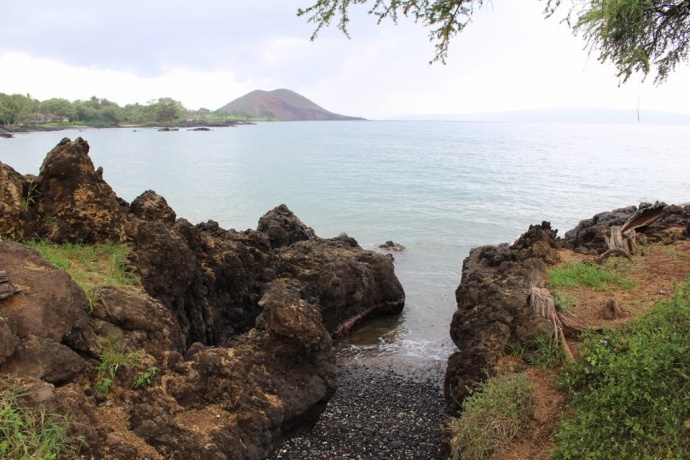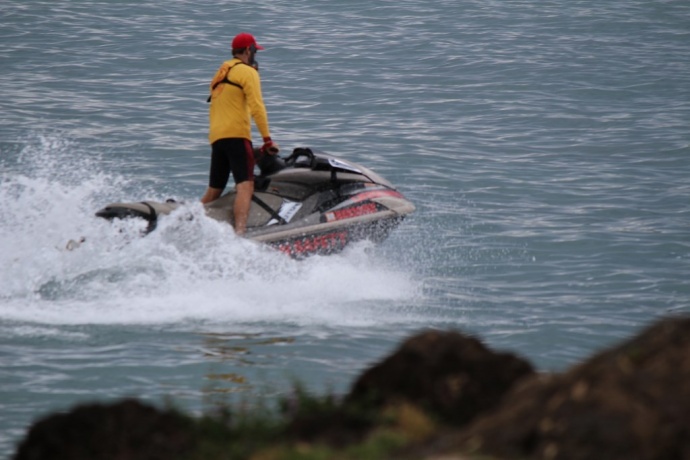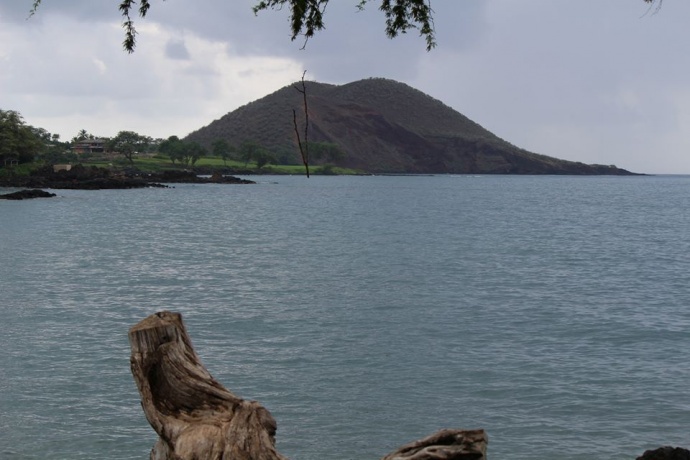Shark Tracking, Safety Tips Gain Traction After 2nd Fatality
By Wendy Osher
A stretch of South Maui shoreline was reopened on Tuesday afternoon following a deadly shark attack in waters off of Mākena on Monday.
Maui nearshore waters from Puʻuōlaʻi to Mākena Landing reopened shortly after 12 p.m., following morning on-water patrols by Maui County lifeguards and DLNR DOCARE enforcement officers.
DLNR officials say no sharks were seen during the morning patrols and air flyover conducted by crews aboard the Maui Department of Fire and Public Safety’s helicopter.
The shark response protocol was conducted following the fatal injury of 57-year-old Washington State visitor, Patrick A. Briney. Authorities say Briney was kayak fishing offshore with artificial lures to attract baitfish when his dangling foot was bit by a shark.
The incident was the second fatal shark attack in Maui waters this year and comes following the death of German visitor, Jana Lutteropp in August at Maui’s Palauea Beach in Mākena.
According to the Division of Aquatic Resources, this is the thirteenth reported shark incident statewide this year, and the eighth in Maui waters. The agency notes that over the last 20 years, Hawaiʻi has averaged about four unprovoked shark incidents per year, but numbers per individual year are “highly variable.”
There were no reported incidents in 1998, and just one in 2008, according to the DLNR. In 2012, the 10 incidents reported were at the time unprecedented, the report states.
Confirmed shark bite incidents reported in Maui waters so far this year include the following encounters:
- November 29, 2013, at Keawakapu Beach: Involved a female victim who sustained non-fatal injuries.
- October 31, 2013, at Ka’a Point in Central Maui: A kite surfer suffered injuries to his right leg and calf in an apparent shark attack incident about 300 yards offshore.
- October 23, 2013, off of Kukona Place in Waiehu: Shane Mills of Maui suffered a laceration to his lower back and left thigh in an apparent shark bite incident.
- August 14, 2013, at Palauea Beach, also known as White Rock in Mākena: Jana Lutteropp, a 20-year-old German woman had her arm severed in a shark attack incident and died a week later on Wednesday, Aug. 21.
- July 31, 2013, at Ulua Beach in Wailea: Evonne Cashman of California suffered puncture wounds to both surfaces of right side of torso and lacerations to right hand while swimming approximately 125 yards from shore.
- February 21, 2013, at Kā’anapali, Honokōwai: A surfer reportedly suffered lacerations to their right leg after an encounter with a reef shark approx 100 yards from shore in six feet of water, according to state data.
- February 21, 2013, at Pāʻia Bay: A reef shark reportedly bit the rail of a foam surfboard while J. Lansky was surfing approximately 75 yards from shore in 5 to 8 feet of water, according to the state data.
According to information posted on the Department of Land and Natural Resources website, authorities say, “It’s important to keep these incidents in perspective, and to remember that in Hawai‘i the chances of being bitten by a shark are less than one in a million.”
In a press release statement DLNR Chairperson William Aila Jr. on Monday said, “We are not sure why these bites are occurring more frequently than normal, especially around Maui. That’s why we are conducting a two-year study of shark behavior around Maui that may give us better insights. It is our hope and expectation that numbers of incidents will return to a more normal range in the near future.”
The $186,000 study began last month, and focuses on tiger shark movements around Maui, comparing their behavior to that of known movement patterns around the other main Hawaiian islands.
The data will be used to help determine whether sharks around Maui are more resident than they are around other islands, and whether they exhibit greater use of inshore habitats than in other locations, according to information posted on a new web tracking page that monitors movement of several tagged sharks around Maui.
Aila continued saying, “We offer our condolences to the family of the victim. Our thoughts and prayers are with them.”
Some of the tips that frequent ocean goers are familiar with, but those less accustomed to the ocean may not know include the following list of “Safety Dos and Don’ts” published by the DLNR on their agency Hawaiʻi Sharks website. The tips include the following:
- Swim, surf or dive with other people, and don’t move too far away from assistance.
- Stay out of the water at dawn, dusk and night, when some species of sharks may move inshore to feed.
- Do not enter the water if you have open wounds or are bleeding in any way. Sharks can detect blood and body fluids in extremely small concentrations.
- Avoid murky waters, harbor entrances and areas near stream mouths (especially after heavy rains), channels or steep drop-offs. These types of waters are known to be frequented by sharks.
- Do not wear high-contrast clothing or shiny jewelry. Sharks see contrast very well.
- Refrain from excessive splashing; keep pets, which swim erratically, out of the water. Sharks are known to be attracted to such activity.
- Do not enter the water if sharks are known to be present. Leave the water quickly and calmly if one is sighted. Do not provoke or harass a shark, even a small one.
- If fish or turtles start to behave erratically, leave the water. Avoid swimming near dolphins, as they are prey for some large sharks.
- Remove speared fish from the water or tow them a safe distance behind you. Do not swim near people fishing or spear fishing. Stay away from dead animals in the water.
- Swim or surf at beaches patrolled by lifeguards and follow their advice.
Additional information posted on the DLNR website notes that there appears to be an increased risk of being bitten by a shark during certain months, in particular October through December.
“Early Hawaiians recognized this, and cautioned against going in the water at that time. Although fewer people are in the water from November to December, some of Hawaii’s most serious shark attacks took place during those months,” the website states.
In Hawaiian tradition, some sharks were considered ʻaumākua, personal family gods, or deified ancestors, according to the Hawaiian Dictionary (Pukui/Elbert).
“A symbiotic relationship existed; mortals did not harm or eat ʻaumākua (they fed sharks), and ʻaumākua warned and reprimanded mortals in dreams, visions, and calls. (Beckwith, 1970, pp. 124–43, 559; Nānā 38.),” the publication states.













